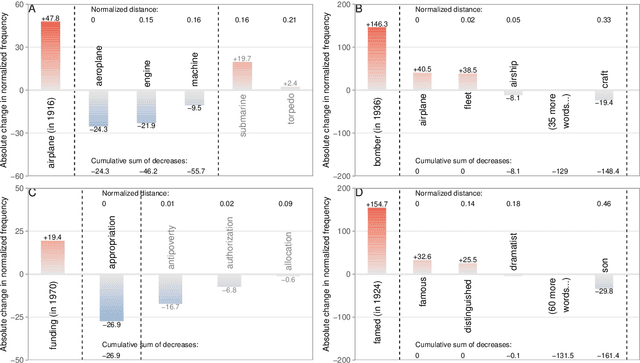Communicative need modulates competition in language change
Paper and Code
Jun 16, 2020



All living languages change over time. The causes for this are many, one being the emergence and borrowing of new linguistic elements. Competition between the new elements and older ones with a similar semantic or grammatical function may lead to speakers preferring one of them, and leaving the other to go out of use. We introduce a general method for quantifying competition between linguistic elements in diachronic corpora which does not require language-specific resources other than a sufficiently large corpus. This approach is readily applicable to a wide range of languages and linguistic subsystems. Here, we apply it to lexical data in five corpora differing in language, type, genre, and time span. We find that changes in communicative need are consistently predictive of lexical competition dynamics. Near-synonymous words are more likely to directly compete if they belong to a topic of conversation whose importance to language users is constant over time, possibly leading to the extinction of one of the competing words. By contrast, in topics which are increasing in importance for language users, near-synonymous words tend not to compete directly and can coexist. This suggests that, in addition to direct competition between words, language change can be driven by competition between topics or semantic subspaces.
 Add to Chrome
Add to Chrome Add to Firefox
Add to Firefox Add to Edge
Add to Edge